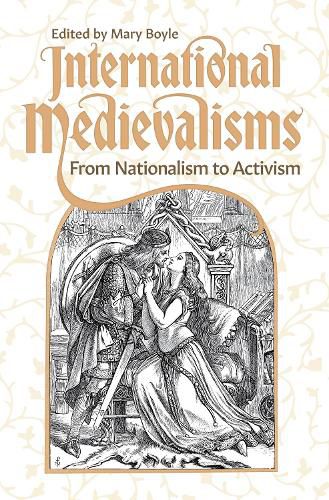Readings Newsletter
Become a Readings Member to make your shopping experience even easier.
Sign in or sign up for free!
You’re not far away from qualifying for FREE standard shipping within Australia
You’ve qualified for FREE standard shipping within Australia
The cart is loading…






Medievalism - the reception of the Middle Ages - often invokes a set of tropes generally considered ‘medieval’, rather than consciously engaging with medieval cultures and societies.International medievalism offers an additional interpretative layer by juxtaposing two or more national cultures, at least one of which is medieval. ‘National’ can be aspirational: it might refer to the area within agreed borders, or to the people who live there, but it might also describe the people who understand, or imagine, themselves to constitute a nation. And once ‘medieval’ becomes simply a collection of ideas, it can be re-formed as desired, cast as more geographically than historically specific, or function as a gateway to an even more nebulous past.
This collection identifies and investigates international medievalism through three distinct strands, ‘Internationally Nationalist’, ‘Someone Else’s Past?’, and ‘Activist Medievalism’, exploring medievalist media from the textual to the architectural. Subjects range from The Green Children of Woolpit to Refugee Tales, and from Viking metal to Joan of Arc. As the contributors to each section make clear, for centuries the medieval has provided material for countless competing causes and cannot be contained within historical, political, or national borders. The essays show how the medieval is repeatedly co-opted and recreated, formed as much as formative: inviting us to ask why, and in service of what.
$9.00 standard shipping within Australia
FREE standard shipping within Australia for orders over $100.00
Express & International shipping calculated at checkout
Medievalism - the reception of the Middle Ages - often invokes a set of tropes generally considered ‘medieval’, rather than consciously engaging with medieval cultures and societies.International medievalism offers an additional interpretative layer by juxtaposing two or more national cultures, at least one of which is medieval. ‘National’ can be aspirational: it might refer to the area within agreed borders, or to the people who live there, but it might also describe the people who understand, or imagine, themselves to constitute a nation. And once ‘medieval’ becomes simply a collection of ideas, it can be re-formed as desired, cast as more geographically than historically specific, or function as a gateway to an even more nebulous past.
This collection identifies and investigates international medievalism through three distinct strands, ‘Internationally Nationalist’, ‘Someone Else’s Past?’, and ‘Activist Medievalism’, exploring medievalist media from the textual to the architectural. Subjects range from The Green Children of Woolpit to Refugee Tales, and from Viking metal to Joan of Arc. As the contributors to each section make clear, for centuries the medieval has provided material for countless competing causes and cannot be contained within historical, political, or national borders. The essays show how the medieval is repeatedly co-opted and recreated, formed as much as formative: inviting us to ask why, and in service of what.